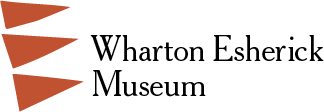-
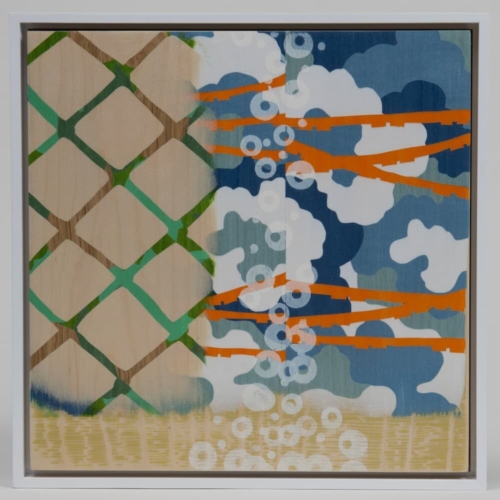 Sara Tabbert Passing Through, 2024 Wood veneer, printmaking ink, wood filler on carved cradled panel 12 x 12 inches This artwork is featured in Renewal: WEM's 31st Annual Juried Woodworking Exhibition on view through September 7, 2025. The twenty-five artists featured in this exhibition each approach renewal from a unique perspective, yet they share an interest in exploring its many manifestations through wood, whether focusing on its material properties, historical resonance, inherent narratives, or metaphorical potential. *Shipping of artworks from the Juried Woodworking Exhibition will be arranged by the artist. Please enter the coupon code juried31 at checkout to receive free shipping on these items. *Member discount cannot be applied to artworks in the Juried Woodworking Exhibition.
Sara Tabbert Passing Through, 2024 Wood veneer, printmaking ink, wood filler on carved cradled panel 12 x 12 inches This artwork is featured in Renewal: WEM's 31st Annual Juried Woodworking Exhibition on view through September 7, 2025. The twenty-five artists featured in this exhibition each approach renewal from a unique perspective, yet they share an interest in exploring its many manifestations through wood, whether focusing on its material properties, historical resonance, inherent narratives, or metaphorical potential. *Shipping of artworks from the Juried Woodworking Exhibition will be arranged by the artist. Please enter the coupon code juried31 at checkout to receive free shipping on these items. *Member discount cannot be applied to artworks in the Juried Woodworking Exhibition. -
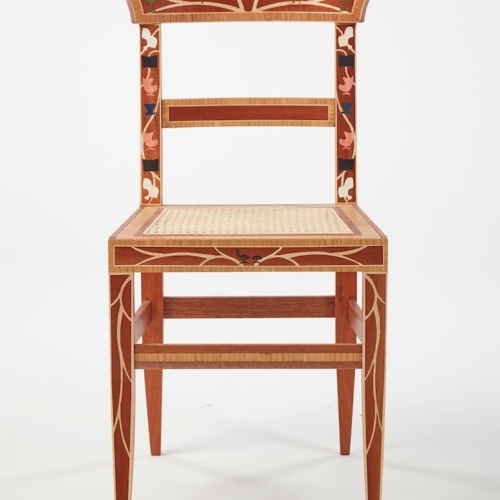
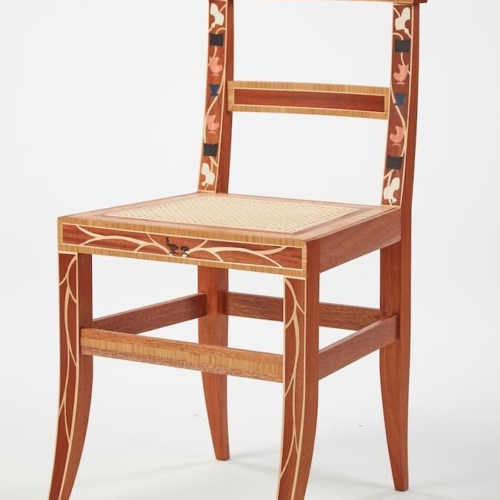 Dotan Appelbaum Chairs, 2023 African mahogany, wood veneers, cane 17 x 16 x 30 inches This artwork is featured in Renewal: WEM's 31st Annual Juried Woodworking Exhibition on view through September 7, 2025. The twenty-five artists featured in this exhibition each approach renewal from a unique perspective, yet they share an interest in exploring its many manifestations through wood, whether focusing on its material properties, historical resonance, inherent narratives, or metaphorical potential. *Shipping of artworks from the Juried Woodworking Exhibition will be arranged by the artist. Please enter the coupon code juried31 at checkout to receive free shipping on these items. *Member discount cannot be applied to artworks in the Juried Woodworking Exhibition.
Dotan Appelbaum Chairs, 2023 African mahogany, wood veneers, cane 17 x 16 x 30 inches This artwork is featured in Renewal: WEM's 31st Annual Juried Woodworking Exhibition on view through September 7, 2025. The twenty-five artists featured in this exhibition each approach renewal from a unique perspective, yet they share an interest in exploring its many manifestations through wood, whether focusing on its material properties, historical resonance, inherent narratives, or metaphorical potential. *Shipping of artworks from the Juried Woodworking Exhibition will be arranged by the artist. Please enter the coupon code juried31 at checkout to receive free shipping on these items. *Member discount cannot be applied to artworks in the Juried Woodworking Exhibition. -
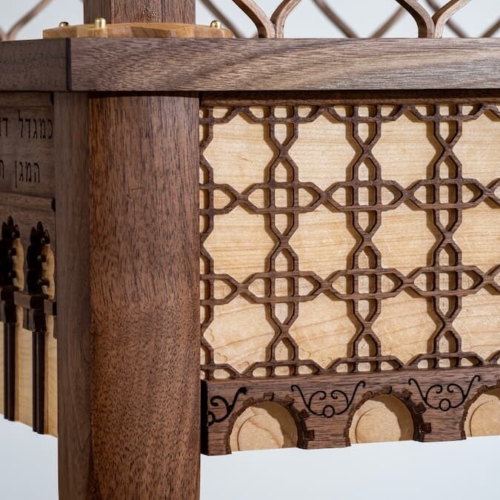
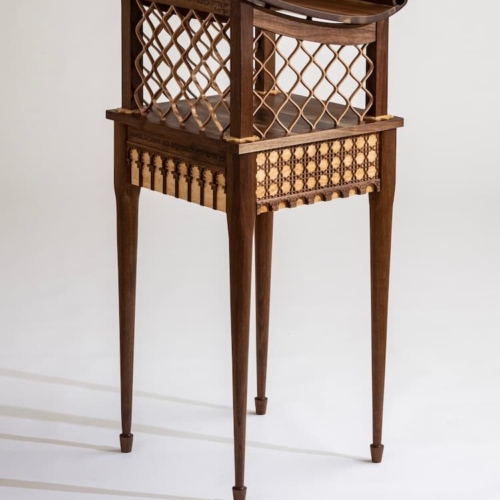 Dotan Appelbaum Abulafia Lectern, 2021 Walnut, maple, maple veneer, brass 20 x 20 x 40 inches This artwork is featured in Renewal: WEM's 31st Annual Juried Woodworking Exhibition on view through September 7, 2025. The twenty-five artists featured in this exhibition each approach renewal from a unique perspective, yet they share an interest in exploring its many manifestations through wood, whether focusing on its material properties, historical resonance, inherent narratives, or metaphorical potential. *Shipping of artworks from the Juried Woodworking Exhibition will be arranged by the artist. Please enter the coupon code juried31 at checkout to receive free shipping on these items. *Member discount cannot be applied to artworks in the Juried Woodworking Exhibition.
Dotan Appelbaum Abulafia Lectern, 2021 Walnut, maple, maple veneer, brass 20 x 20 x 40 inches This artwork is featured in Renewal: WEM's 31st Annual Juried Woodworking Exhibition on view through September 7, 2025. The twenty-five artists featured in this exhibition each approach renewal from a unique perspective, yet they share an interest in exploring its many manifestations through wood, whether focusing on its material properties, historical resonance, inherent narratives, or metaphorical potential. *Shipping of artworks from the Juried Woodworking Exhibition will be arranged by the artist. Please enter the coupon code juried31 at checkout to receive free shipping on these items. *Member discount cannot be applied to artworks in the Juried Woodworking Exhibition. -
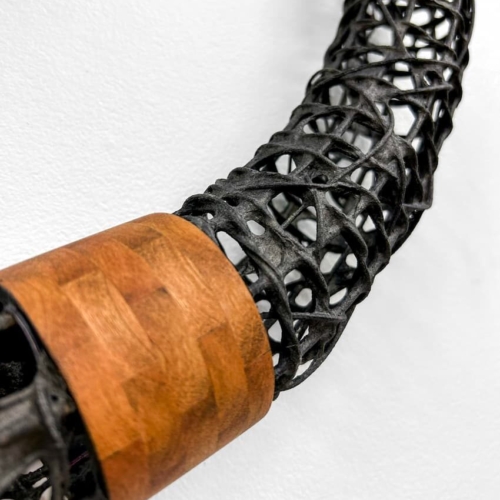
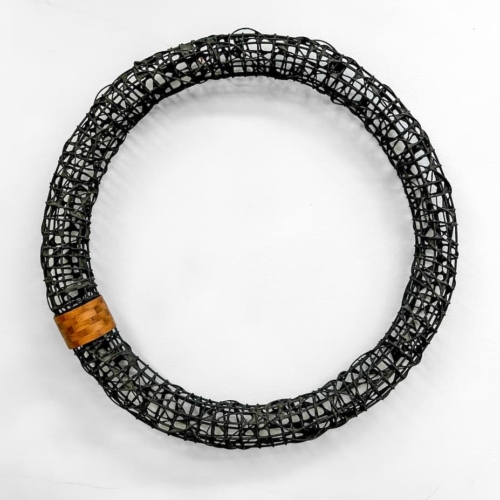 Teresa Audet Circumference VI, 2023 Cherry, dyed reed, flax and abaca paper pulp 32 x 32 x 4 inches This artwork is featured in Renewal: WEM's 31st Annual Juried Woodworking Exhibition on view through September 7, 2025. The twenty-five artists featured in this exhibition each approach renewal from a unique perspective, yet they share an interest in exploring its many manifestations through wood, whether focusing on its material properties, historical resonance, inherent narratives, or metaphorical potential. *Shipping of artworks from the Juried Woodworking Exhibition will be arranged by the artist. Please enter the coupon code juried31 at checkout to receive free shipping on these items. *Member discount cannot be applied to artworks in the Juried Woodworking Exhibition.
Teresa Audet Circumference VI, 2023 Cherry, dyed reed, flax and abaca paper pulp 32 x 32 x 4 inches This artwork is featured in Renewal: WEM's 31st Annual Juried Woodworking Exhibition on view through September 7, 2025. The twenty-five artists featured in this exhibition each approach renewal from a unique perspective, yet they share an interest in exploring its many manifestations through wood, whether focusing on its material properties, historical resonance, inherent narratives, or metaphorical potential. *Shipping of artworks from the Juried Woodworking Exhibition will be arranged by the artist. Please enter the coupon code juried31 at checkout to receive free shipping on these items. *Member discount cannot be applied to artworks in the Juried Woodworking Exhibition. -
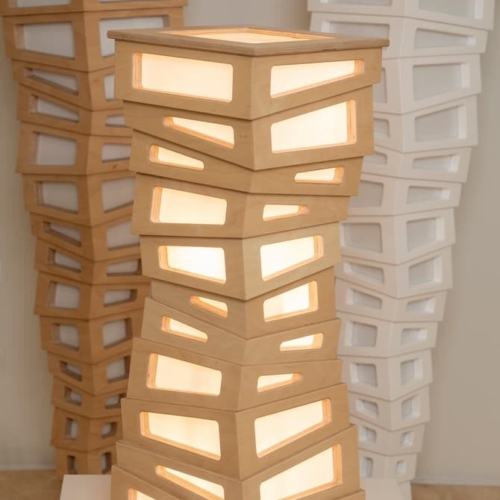
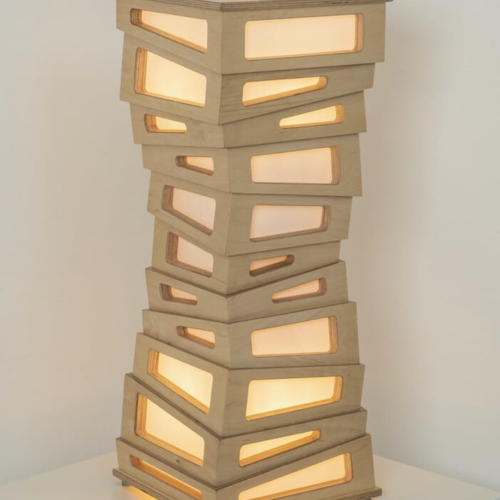
Ashoke Chhabra
Chaos Hourglass Table Lamp, 2024
Baltic birch plywood, acrylic
11 x 11 x 25 inches
This artwork is featured in Renewal: WEM's 31st Annual Juried Woodworking Exhibition on view through September 7, 2025.
The twenty-five artists featured in this exhibition each approach renewal from a unique perspective, yet they share an interest in exploring its many manifestations through wood, whether focusing on its material properties, historical resonance, inherent narratives, or metaphorical potential.
*Shipping of artworks from the Juried Woodworking Exhibition will be arranged by the artist. Please enter the coupon code juried31 at checkout to receive free shipping on these items.
*Member discount cannot be applied to artworks in the Juried Woodworking Exhibition.
-
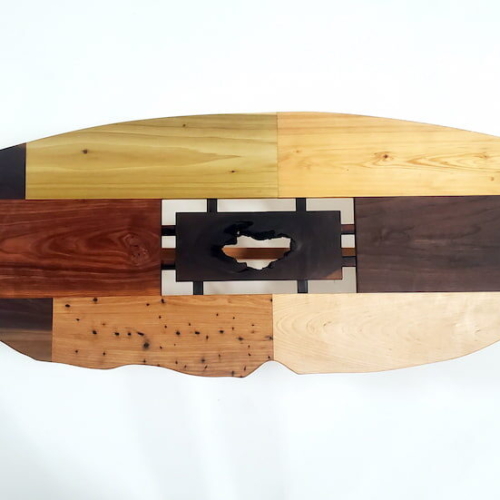

Wednesday Childs
Remnants of Impalement, 2023
Reclaimed hemlock and white oak and scraps of walnut, poplar, maple, ash, cherry, and ebony, finished with linseed oil
57 1/2 x 19 1/2 x 18 1/2 inches
This artwork is featured in Renewal: WEM's 31st Annual Juried Woodworking Exhibition on view through September 7, 2025.
The twenty-five artists featured in this exhibition each approach renewal from a unique perspective, yet they share an interest in exploring its many manifestations through wood, whether focusing on its material properties, historical resonance, inherent narratives, or metaphorical potential.
*Shipping of artworks from the Juried Woodworking Exhibition will be arranged by the artist. Please enter the coupon code juried31 at checkout to receive free shipping on these items.
*Member discount cannot be applied to artworks in the Juried Woodworking Exhibition.
-


Bruce Colburn
Plastic Cherry Blossoms, 2023
Sycamore branches, milk top pull rings
75 x 38 x 27 inches
This artwork is featured in Renewal: WEM's 31st Annual Juried Woodworking Exhibition on view through September 7, 2025.
The twenty-five artists featured in this exhibition each approach renewal from a unique perspective, yet they share an interest in exploring its many manifestations through wood, whether focusing on its material properties, historical resonance, inherent narratives, or metaphorical potential.
*Shipping of artworks from the Juried Woodworking Exhibition will be arranged by the artist. Please enter the coupon code juried31 at checkout to receive free shipping on these items.
*Member discount cannot be applied to artworks in the Juried Woodworking Exhibition.
-

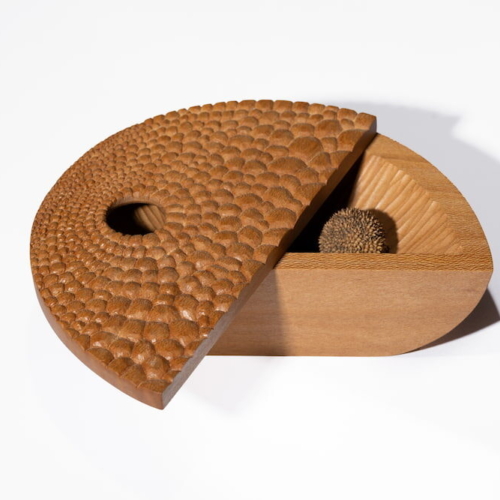 Talia Drury Sycamore I: Achenes, 2024 Sycamore 7 x 4 1/8 x 2 1/2 inches This artwork is featured in Renewal: WEM's 31st Annual Juried Woodworking Exhibition on view through September 7, 2025. The twenty-five artists featured in this exhibition each approach renewal from a unique perspective, yet they share an interest in exploring its many manifestations through wood, whether focusing on its material properties, historical resonance, inherent narratives, or metaphorical potential. *Shipping of artworks from the Juried Woodworking Exhibition will be arranged by the artist. Please enter the coupon code juried31 at checkout to receive free shipping on these items. *Member discount cannot be applied to artworks in the Juried Woodworking Exhibition.
Talia Drury Sycamore I: Achenes, 2024 Sycamore 7 x 4 1/8 x 2 1/2 inches This artwork is featured in Renewal: WEM's 31st Annual Juried Woodworking Exhibition on view through September 7, 2025. The twenty-five artists featured in this exhibition each approach renewal from a unique perspective, yet they share an interest in exploring its many manifestations through wood, whether focusing on its material properties, historical resonance, inherent narratives, or metaphorical potential. *Shipping of artworks from the Juried Woodworking Exhibition will be arranged by the artist. Please enter the coupon code juried31 at checkout to receive free shipping on these items. *Member discount cannot be applied to artworks in the Juried Woodworking Exhibition. -
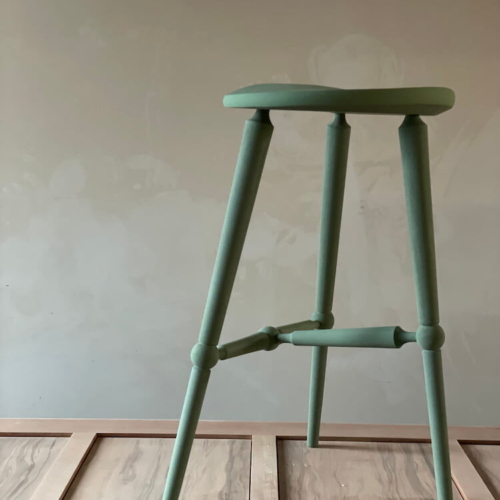
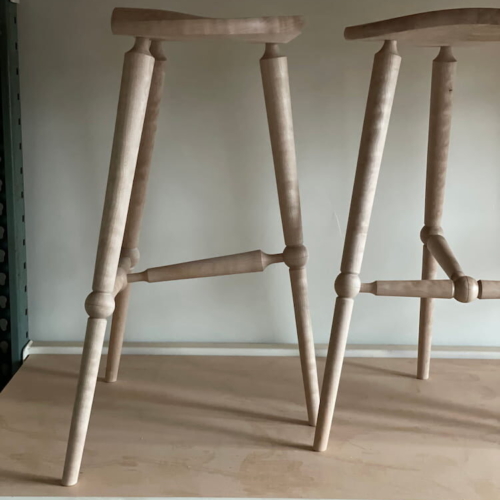 Matthew Giossi & Ronald Kuhn Tripod Stool, 2024 Painted poplar, blister maple Dimensions Variable This artwork is featured in Renewal: WEM's 31st Annual Juried Woodworking Exhibition on view through September 7, 2025. The twenty-five artists featured in this exhibition each approach renewal from a unique perspective, yet they share an interest in exploring its many manifestations through wood, whether focusing on its material properties, historical resonance, inherent narratives, or metaphorical potential. *Shipping of artworks from the Juried Woodworking Exhibition will be arranged by the artist. Please enter the coupon code juried31 at checkout to receive free shipping on these items. *Member discount cannot be applied to artworks in the Juried Woodworking Exhibition.
Matthew Giossi & Ronald Kuhn Tripod Stool, 2024 Painted poplar, blister maple Dimensions Variable This artwork is featured in Renewal: WEM's 31st Annual Juried Woodworking Exhibition on view through September 7, 2025. The twenty-five artists featured in this exhibition each approach renewal from a unique perspective, yet they share an interest in exploring its many manifestations through wood, whether focusing on its material properties, historical resonance, inherent narratives, or metaphorical potential. *Shipping of artworks from the Juried Woodworking Exhibition will be arranged by the artist. Please enter the coupon code juried31 at checkout to receive free shipping on these items. *Member discount cannot be applied to artworks in the Juried Woodworking Exhibition. -
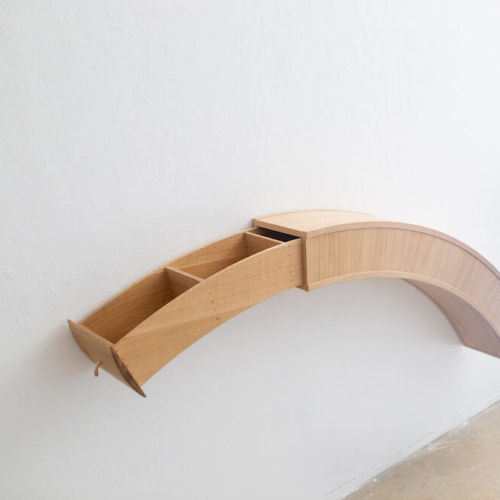
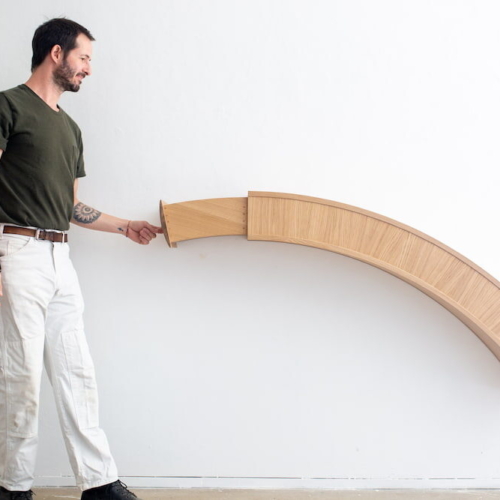 Miles Gracey Al Dente, 2023 Euro white oak, plywood, brass 102 x 9 x 50 inches This artwork is featured in Renewal: WEM's 31st Annual Juried Woodworking Exhibition on view through September 7, 2025. The twenty-five artists featured in this exhibition each approach renewal from a unique perspective, yet they share an interest in exploring its many manifestations through wood, whether focusing on its material properties, historical resonance, inherent narratives, or metaphorical potential. *Shipping of artworks from the Juried Woodworking Exhibition will be arranged by the artist. Please enter the coupon code juried31 at checkout to receive free shipping on these items. *Member discount cannot be applied to artworks in the Juried Woodworking Exhibition.
Miles Gracey Al Dente, 2023 Euro white oak, plywood, brass 102 x 9 x 50 inches This artwork is featured in Renewal: WEM's 31st Annual Juried Woodworking Exhibition on view through September 7, 2025. The twenty-five artists featured in this exhibition each approach renewal from a unique perspective, yet they share an interest in exploring its many manifestations through wood, whether focusing on its material properties, historical resonance, inherent narratives, or metaphorical potential. *Shipping of artworks from the Juried Woodworking Exhibition will be arranged by the artist. Please enter the coupon code juried31 at checkout to receive free shipping on these items. *Member discount cannot be applied to artworks in the Juried Woodworking Exhibition. -
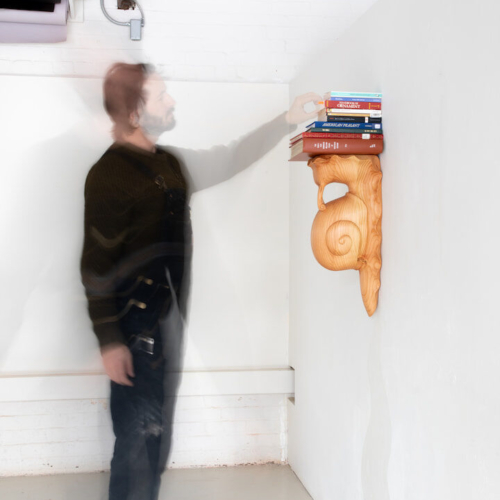
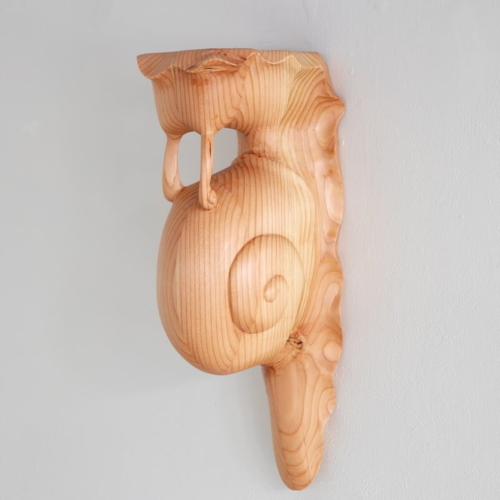
Miles Gracey
Snail Shelf, 2024
Pine
6 x 9 x 24 inches
This artwork is featured in Renewal: WEM's 31st Annual Juried Woodworking Exhibition on view through September 7, 2025.
The twenty-five artists featured in this exhibition each approach renewal from a unique perspective, yet they share an interest in exploring its many manifestations through wood, whether focusing on its material properties, historical resonance, inherent narratives, or metaphorical potential.
*Shipping of artworks from the Juried Woodworking Exhibition will be arranged by the artist. Please enter the coupon code juried31 at checkout to receive free shipping on these items.
*Member discount cannot be applied to artworks in the Juried Woodworking Exhibition.
-
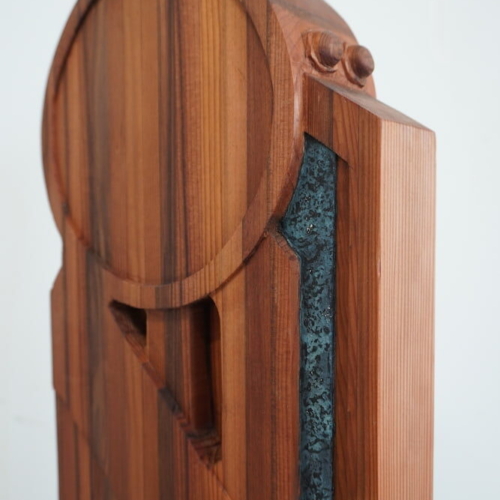
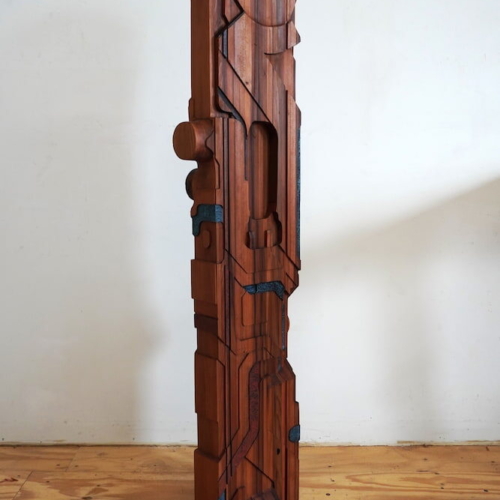 Elias Griffin Engine No. 4, 2024 Reclaimed redwood glulam, copper carbonate, black iron oxide, marble dust, hard-wax oil 16 x 9 x 61 inches This artwork is featured in Renewal: WEM's 31st Annual Juried Woodworking Exhibition on view through September 7, 2025. The twenty-five artists featured in this exhibition each approach renewal from a unique perspective, yet they share an interest in exploring its many manifestations through wood, whether focusing on its material properties, historical resonance, inherent narratives, or metaphorical potential. *Shipping of artworks from the Juried Woodworking Exhibition will be arranged by the artist. Please enter the coupon code juried31 at checkout to receive free shipping on these items. *Member discount cannot be applied to artworks in the Juried Woodworking Exhibition.
Elias Griffin Engine No. 4, 2024 Reclaimed redwood glulam, copper carbonate, black iron oxide, marble dust, hard-wax oil 16 x 9 x 61 inches This artwork is featured in Renewal: WEM's 31st Annual Juried Woodworking Exhibition on view through September 7, 2025. The twenty-five artists featured in this exhibition each approach renewal from a unique perspective, yet they share an interest in exploring its many manifestations through wood, whether focusing on its material properties, historical resonance, inherent narratives, or metaphorical potential. *Shipping of artworks from the Juried Woodworking Exhibition will be arranged by the artist. Please enter the coupon code juried31 at checkout to receive free shipping on these items. *Member discount cannot be applied to artworks in the Juried Woodworking Exhibition. -
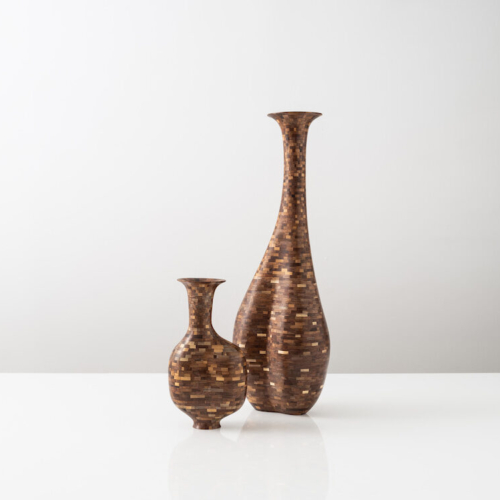
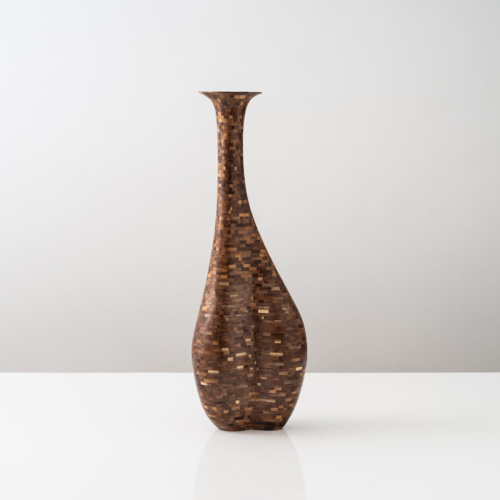
Richard Haining, Jr.
Tall STACKED Asymmetrical Vessel, 2024
Salvaged walnut
9 x 5 x 26 1/4 inches
This artwork is featured in Renewal: WEM's 31st Annual Juried Woodworking Exhibition on view through September 7, 2025.
The twenty-five artists featured in this exhibition each approach renewal from a unique perspective, yet they share an interest in exploring its many manifestations through wood, whether focusing on its material properties, historical resonance, inherent narratives, or metaphorical potential.
*Shipping of artworks from the Juried Woodworking Exhibition will be arranged by the artist. Please enter the coupon code juried31 at checkout to receive free shipping on these items.
*Member discount cannot be applied to artworks in the Juried Woodworking Exhibition.
-

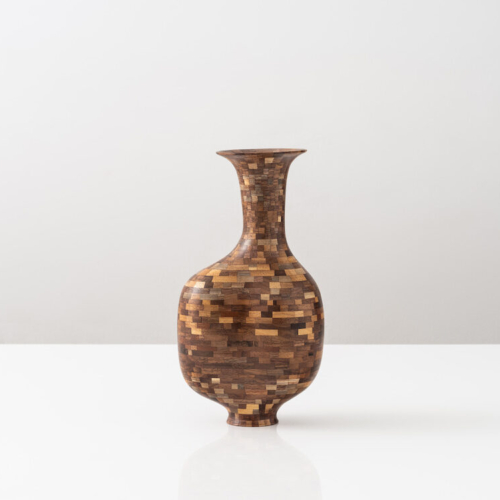 Richard Haining, Jr. Short STACKED Asymmetrical Vessel, 2024 Salvaged walnut 6 1/2 x 4 1/4 x 12 1/4 inches This artwork is featured in Renewal: WEM's 31st Annual Juried Woodworking Exhibition on view through September 7, 2025. The twenty-five artists featured in this exhibition each approach renewal from a unique perspective, yet they share an interest in exploring its many manifestations through wood, whether focusing on its material properties, historical resonance, inherent narratives, or metaphorical potential. *Shipping of artworks from the Juried Woodworking Exhibition will be arranged by the artist. Please enter the coupon code juried31 at checkout to receive free shipping on these items. *Member discount cannot be applied to artworks in the Juried Woodworking Exhibition.
Richard Haining, Jr. Short STACKED Asymmetrical Vessel, 2024 Salvaged walnut 6 1/2 x 4 1/4 x 12 1/4 inches This artwork is featured in Renewal: WEM's 31st Annual Juried Woodworking Exhibition on view through September 7, 2025. The twenty-five artists featured in this exhibition each approach renewal from a unique perspective, yet they share an interest in exploring its many manifestations through wood, whether focusing on its material properties, historical resonance, inherent narratives, or metaphorical potential. *Shipping of artworks from the Juried Woodworking Exhibition will be arranged by the artist. Please enter the coupon code juried31 at checkout to receive free shipping on these items. *Member discount cannot be applied to artworks in the Juried Woodworking Exhibition. -
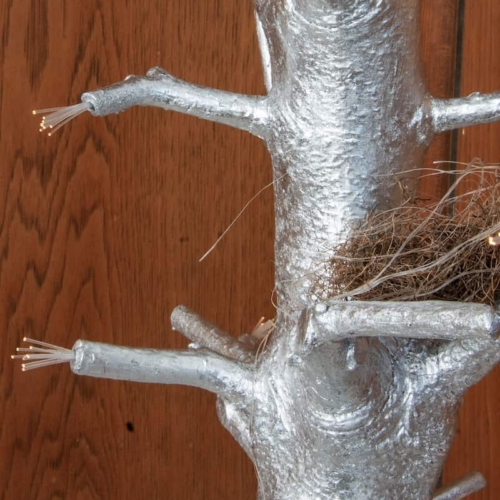
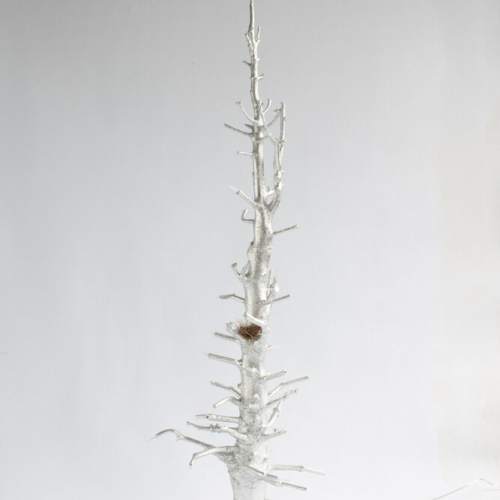
Aydan Hüseynli
Come Back Home for Christmas, 2024
Optical fiber, LED string lights, aluminum pipe, my Christmas tree from 2023 (pine)
14 x 14 x 60 inches
This artwork is featured in Renewal: WEM's 31st Annual Juried Woodworking Exhibition on view through September 7, 2025.
The twenty-five artists featured in this exhibition each approach renewal from a unique perspective, yet they share an interest in exploring its many manifestations through wood, whether focusing on its material properties, historical resonance, inherent narratives, or metaphorical potential.
*Shipping of artworks from the Juried Woodworking Exhibition will be arranged by the artist. Please enter the coupon code juried31 at checkout to receive free shipping on these items.
*Member discount cannot be applied to artworks in the Juried Woodworking Exhibition.
-
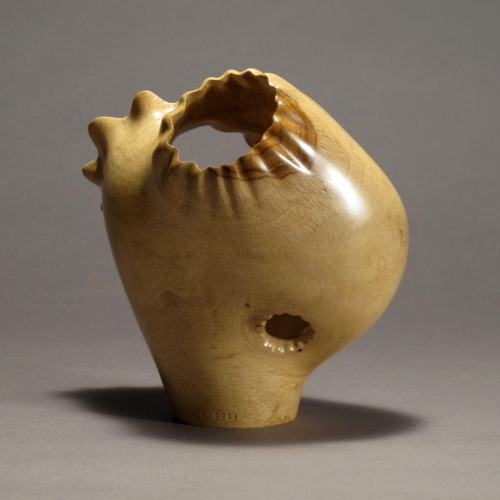
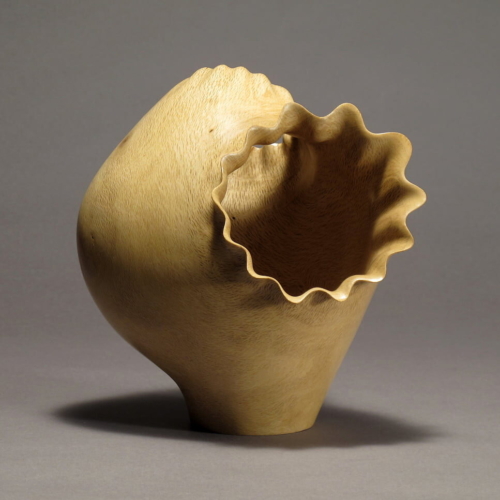
Danny Kamerath
Burst, 2024
Post oak
9 x 9 x 9 inches
This artwork is featured in Renewal: WEM's 31st Annual Juried Woodworking Exhibition on view through September 7, 2025.
The twenty-five artists featured in this exhibition each approach renewal from a unique perspective, yet they share an interest in exploring its many manifestations through wood, whether focusing on its material properties, historical resonance, inherent narratives, or metaphorical potential.
*Shipping of artworks from the Juried Woodworking Exhibition will be arranged by the artist. Please enter the coupon code juried31 at checkout to receive free shipping on these items.
*Member discount cannot be applied to artworks in the Juried Woodworking Exhibition.
-
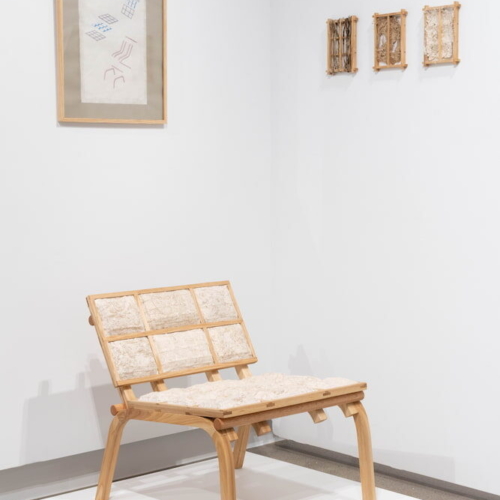 Mizuki Kojima KAMI, 2024 Kozo plant, cotton rag, rattan, ash 25 x 24 x 24 inches This artwork is featured in Renewal: WEM's 31st Annual Juried Woodworking Exhibition on view through September 7, 2025. The twenty-five artists featured in this exhibition each approach renewal from a unique perspective, yet they share an interest in exploring its many manifestations through wood, whether focusing on its material properties, historical resonance, inherent narratives, or metaphorical potential. *Shipping of artworks from the Juried Woodworking Exhibition will be arranged by the artist. Please enter the coupon code juried31 at checkout to receive free shipping on these items. *Member discount cannot be applied to artworks in the Juried Woodworking Exhibition.
Mizuki Kojima KAMI, 2024 Kozo plant, cotton rag, rattan, ash 25 x 24 x 24 inches This artwork is featured in Renewal: WEM's 31st Annual Juried Woodworking Exhibition on view through September 7, 2025. The twenty-five artists featured in this exhibition each approach renewal from a unique perspective, yet they share an interest in exploring its many manifestations through wood, whether focusing on its material properties, historical resonance, inherent narratives, or metaphorical potential. *Shipping of artworks from the Juried Woodworking Exhibition will be arranged by the artist. Please enter the coupon code juried31 at checkout to receive free shipping on these items. *Member discount cannot be applied to artworks in the Juried Woodworking Exhibition. -
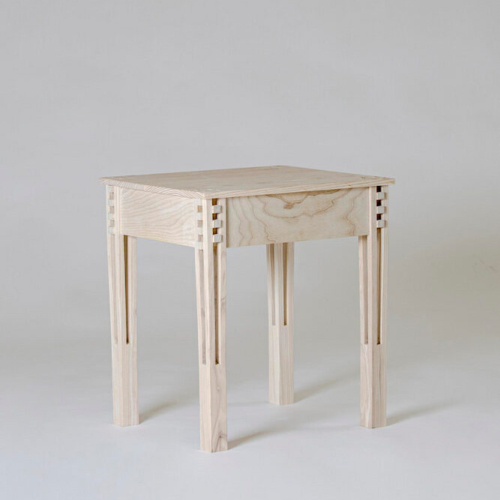 Mizuki Kojima Stool, 2021 Ash 16 x 16 x 18 inches This artwork is featured in Renewal: WEM's 31st Annual Juried Woodworking Exhibition on view through September 7, 2025. The twenty-five artists featured in this exhibition each approach renewal from a unique perspective, yet they share an interest in exploring its many manifestations through wood, whether focusing on its material properties, historical resonance, inherent narratives, or metaphorical potential. *Shipping of artworks from the Juried Woodworking Exhibition will be arranged by the artist. Please enter the coupon code juried31 at checkout to receive free shipping on these items. *Member discount cannot be applied to artworks in the Juried Woodworking Exhibition.
Mizuki Kojima Stool, 2021 Ash 16 x 16 x 18 inches This artwork is featured in Renewal: WEM's 31st Annual Juried Woodworking Exhibition on view through September 7, 2025. The twenty-five artists featured in this exhibition each approach renewal from a unique perspective, yet they share an interest in exploring its many manifestations through wood, whether focusing on its material properties, historical resonance, inherent narratives, or metaphorical potential. *Shipping of artworks from the Juried Woodworking Exhibition will be arranged by the artist. Please enter the coupon code juried31 at checkout to receive free shipping on these items. *Member discount cannot be applied to artworks in the Juried Woodworking Exhibition. -
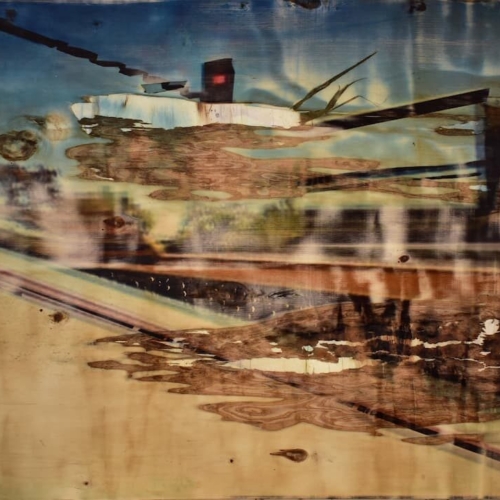 Janos Korodi Transfer 06, 2020 Sheathing plywood 31 1/2 × 43 × 1/4 inches This artwork is featured in Renewal: WEM's 31st Annual Juried Woodworking Exhibition on view through September 7, 2025. The twenty-five artists featured in this exhibition each approach renewal from a unique perspective, yet they share an interest in exploring its many manifestations through wood, whether focusing on its material properties, historical resonance, inherent narratives, or metaphorical potential. *Shipping of artworks from the Juried Woodworking Exhibition will be arranged by the artist. Please enter the coupon code juried31 at checkout to receive free shipping on these items. *Member discount cannot be applied to artworks in the Juried Woodworking Exhibition.
Janos Korodi Transfer 06, 2020 Sheathing plywood 31 1/2 × 43 × 1/4 inches This artwork is featured in Renewal: WEM's 31st Annual Juried Woodworking Exhibition on view through September 7, 2025. The twenty-five artists featured in this exhibition each approach renewal from a unique perspective, yet they share an interest in exploring its many manifestations through wood, whether focusing on its material properties, historical resonance, inherent narratives, or metaphorical potential. *Shipping of artworks from the Juried Woodworking Exhibition will be arranged by the artist. Please enter the coupon code juried31 at checkout to receive free shipping on these items. *Member discount cannot be applied to artworks in the Juried Woodworking Exhibition. -
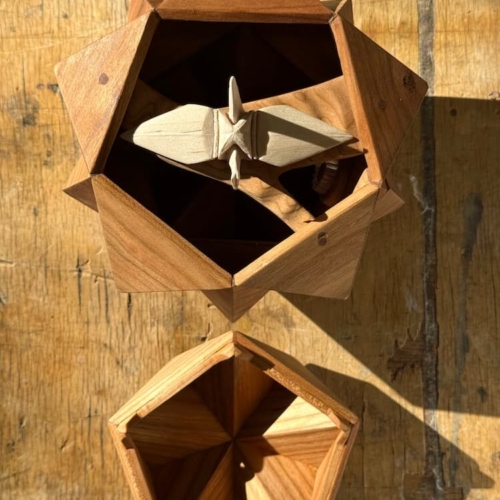
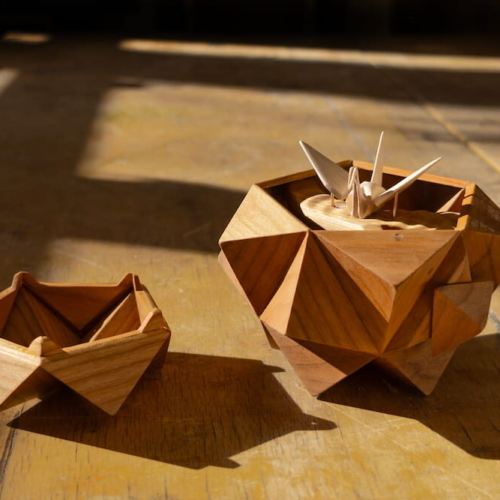 Lisa Max Tsuru, 2024 Cherry, maple, brass, fabric, and resin 6 x 6 x 6 inches This artwork is featured in Renewal: WEM's 31st Annual Juried Woodworking Exhibition on view through September 7, 2025. The twenty-five artists featured in this exhibition each approach renewal from a unique perspective, yet they share an interest in exploring its many manifestations through wood, whether focusing on its material properties, historical resonance, inherent narratives, or metaphorical potential. *Shipping of artworks from the Juried Woodworking Exhibition will be arranged by the artist. Please enter the coupon code juried31 at checkout to receive free shipping on these items. *Member discount cannot be applied to artworks in the Juried Woodworking Exhibition.
Lisa Max Tsuru, 2024 Cherry, maple, brass, fabric, and resin 6 x 6 x 6 inches This artwork is featured in Renewal: WEM's 31st Annual Juried Woodworking Exhibition on view through September 7, 2025. The twenty-five artists featured in this exhibition each approach renewal from a unique perspective, yet they share an interest in exploring its many manifestations through wood, whether focusing on its material properties, historical resonance, inherent narratives, or metaphorical potential. *Shipping of artworks from the Juried Woodworking Exhibition will be arranged by the artist. Please enter the coupon code juried31 at checkout to receive free shipping on these items. *Member discount cannot be applied to artworks in the Juried Woodworking Exhibition. -
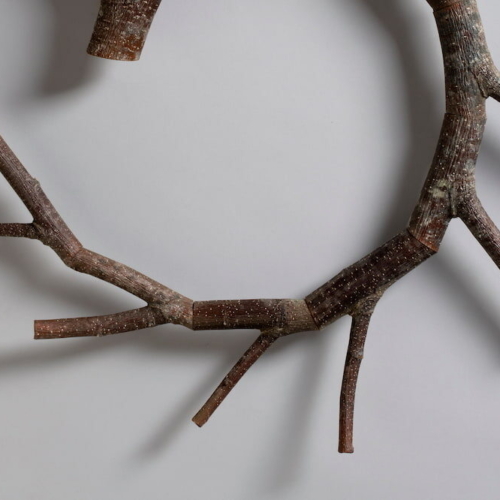
 Seth Rolland Castanea spiralis, 2024 Pruned Chestnut 18 x 17 x 2 inches This artwork is featured in Renewal: WEM's 31st Annual Juried Woodworking Exhibition on view through September 7, 2025. The twenty-five artists featured in this exhibition each approach renewal from a unique perspective, yet they share an interest in exploring its many manifestations through wood, whether focusing on its material properties, historical resonance, inherent narratives, or metaphorical potential. *Shipping of artworks from the Juried Woodworking Exhibition will be arranged by the artist. Please enter the coupon code juried31 at checkout to receive free shipping on these items. *Member discount cannot be applied to artworks in the Juried Woodworking Exhibition.
Seth Rolland Castanea spiralis, 2024 Pruned Chestnut 18 x 17 x 2 inches This artwork is featured in Renewal: WEM's 31st Annual Juried Woodworking Exhibition on view through September 7, 2025. The twenty-five artists featured in this exhibition each approach renewal from a unique perspective, yet they share an interest in exploring its many manifestations through wood, whether focusing on its material properties, historical resonance, inherent narratives, or metaphorical potential. *Shipping of artworks from the Juried Woodworking Exhibition will be arranged by the artist. Please enter the coupon code juried31 at checkout to receive free shipping on these items. *Member discount cannot be applied to artworks in the Juried Woodworking Exhibition. -

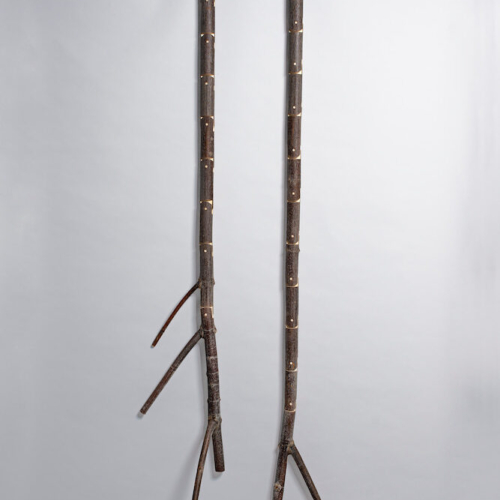
Seth Rolland
Acer articulo, 2024
Pruned maple
22 x 7 x 84 inches
This artwork is featured in Renewal: WEM's 31st Annual Juried Woodworking Exhibition on view through September 7, 2025.
The twenty-five artists featured in this exhibition each approach renewal from a unique perspective, yet they share an interest in exploring its many manifestations through wood, whether focusing on its material properties, historical resonance, inherent narratives, or metaphorical potential.
*Shipping of artworks from the Juried Woodworking Exhibition will be arranged by the artist. Please enter the coupon code juried31 at checkout to receive free shipping on these items.
*Member discount cannot be applied to artworks in the Juried Woodworking Exhibition.
-
 Steve Sinner Untitled, 2024 Maple, Watco Oil 2 5/8 x 1 1/8 x 1 1/8 inches This artwork is featured in Renewal: WEM's 31st Annual Juried Woodworking Exhibition on view through September 7, 2025. The twenty-five artists featured in this exhibition each approach renewal from a unique perspective, yet they share an interest in exploring its many manifestations through wood, whether focusing on its material properties, historical resonance, inherent narratives, or metaphorical potential. *Shipping of artworks from the Juried Woodworking Exhibition will be arranged by the artist. Please enter the coupon code juried31 at checkout to receive free shipping on these items. *Member discount cannot be applied to artworks in the Juried Woodworking Exhibition.
Steve Sinner Untitled, 2024 Maple, Watco Oil 2 5/8 x 1 1/8 x 1 1/8 inches This artwork is featured in Renewal: WEM's 31st Annual Juried Woodworking Exhibition on view through September 7, 2025. The twenty-five artists featured in this exhibition each approach renewal from a unique perspective, yet they share an interest in exploring its many manifestations through wood, whether focusing on its material properties, historical resonance, inherent narratives, or metaphorical potential. *Shipping of artworks from the Juried Woodworking Exhibition will be arranged by the artist. Please enter the coupon code juried31 at checkout to receive free shipping on these items. *Member discount cannot be applied to artworks in the Juried Woodworking Exhibition. -

Rosalind Sutkowski
Simulated Bark #3, 2019
Wooden photograph, birch
14 x 11 x 2 inches
This artwork is featured in Renewal: WEM's 31st Annual Juried Woodworking Exhibition on view through September 7, 2025.
The twenty-five artists featured in this exhibition each approach renewal from a unique perspective, yet they share an interest in exploring its many manifestations through wood, whether focusing on its material properties, historical resonance, inherent narratives, or metaphorical potential.
*Shipping of artworks from the Juried Woodworking Exhibition will be arranged by the artist. Please enter the coupon code juried31 at checkout to receive free shipping on these items.
*Member discount cannot be applied to artworks in the Juried Woodworking Exhibition.
